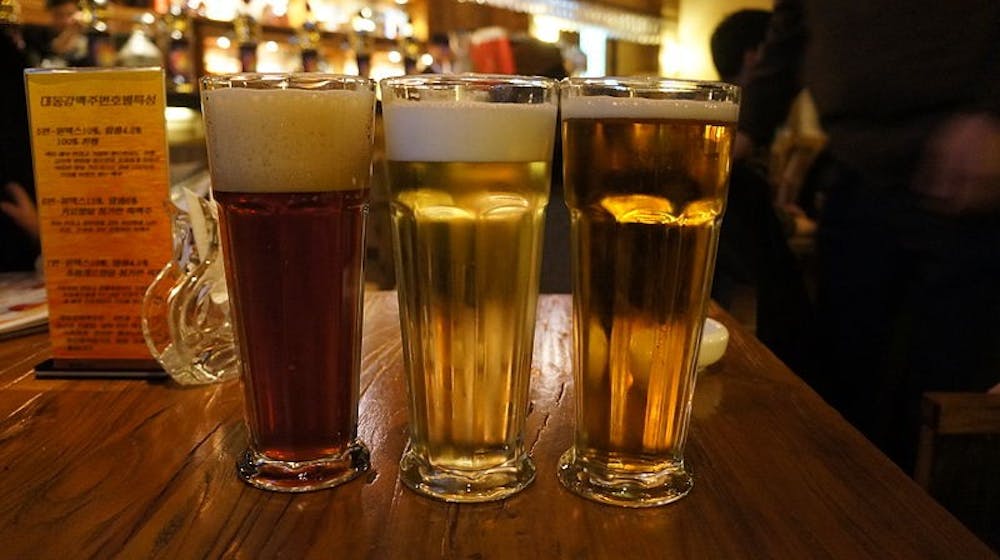By RAYYAN JOKHAI For The News-Letter
Over 18 million Americans and 200 million people worldwide suffer from alcoholism. Although some of the risk factors, such as binge drinking, are understood, scientists are not exactly sure of all of its causes. However, a recent study has identified an enzyme that may play a role in alcohol consumption in mice.
Binge drinking, or the heavy consumption of alcohol with the intention of becoming intoxicated, significantly increases the possibility of developing alcoholism.
Medications such as disulfiram have commonly been used to treat alcoholism and do so with varying degrees of success.
However, the primary function of these medications in combating alcohol is to reduce the side effects of alcoholism such as shortness of breath, nausea and headaches rather than to diminish the urge to drink. These drugs cannot actually prevent alcoholism because they do not target the craving for intoxicating drinks that alcoholism causes. In a study published in Science this month, a Stanford University School of Medicine team led by Jae-Ick Kim investigated the underlying sources of alcoholic behavior.
They report a previously unknown function performed by the enzyme ALDH1A1 in mice. According to Jun Ding, assistant professor of neurosurgery at Stanford University, this breakthrough could help to develop medications that don’t just treat alcoholism but prevent it.
Kim, Ding and their associates have observed in the lab that blocking ALDH1A1 in mice caused the consumption and the general inclination to consume alcohol to increase. Similarly, restoring ALDH1a1 levels in the mice reversed this effect and lowered the mice’s preference for alcohol.

While mutations in ALDH1a1 are associated with an increased desire to consume alcohol, the exact reasoning has been cloudy. However this study has found that ALDH1a1 has a crucial role in a previously unknown biochemical production of an important neurotransmitter, GABA.
Neurotransmitters are chemicals that promote the communication of information throughout our brain and body by binding to receptors on nerve cells. GABA is the brain’s main inhibitory neurotransmitter, which means that it helps to balance mood.
Until now GABA was previously thought to be manufactured in brains through a process that did not include ALDH1a1.
While it is indeed produced throughout the brain, this new GABA production line that included ALDH1a1 was observed in only a few cells that were involved in causing addiction. The medical implications of this are fascinating, as it is now possible to increase GABA along this specific assembly line by boosting ALDH1a1 levels, thereby restoring the balance that has been disturbed by excessive alcohol consumption.
Another better known neurotransmitter is dopamine, which is famous for its involvement in modulating motion and motivation. Dopamine causes an overcharge of the brain’s reward circuit which is involved in the processing of addicting drugs like cocaine and addicting habits like gambling.
The reward circuit is important in the daily function of organisms and the overall survival of their species as it encourages eating, sleeping, making connections and having sex. Until recently it was thought that each nerve cell only released one neurotransmitter but this was debunked by Ding in 2012 while he was a postdoctoral researcher at Harvard Medical School.
There he found that nerve cells can manufacture and release other types of neurotransmitters, GABA included. What is most interesting is that some of the cells produce and release GABA and dopamine simultaneously, suggesting GABA’s involvement in addiction. By blocking GABA’s production, and thereby its effects, researchers can allow dopamine to be produced in mice. However, to his surprise, this failed to reduce GABA levels in these cells. Upon further investigation of the anatomical structure of dopamine-producing nerve cells, Ding and his team of researchers identified ALDH1a1 as the specific enzyme still at work in the dopamine-producing cells.
Now, by impeding ALDH1a1 production, the GABA levels dropped despite dopamine production in the mice’s cells, just as it did in the mice that underwent rounds of high alcohol consumption. Reversing this and now increasing ALDH1a1 produced opposite effects.
Ding claims that GABA’s simultaneous production and release with dopamine is what prevents us from becoming addicted to pleasurable sensations most of the time. However the alteration of the ALDH1a1 is what stops GABA from acting as a speed bump and allows binge drinking to turn into alcoholism. Looking to take his research to the next step, Ding hopes to see whether similar systems cause other types of addiction.





